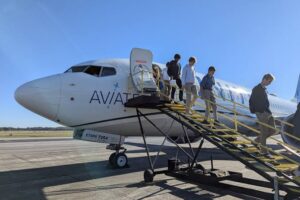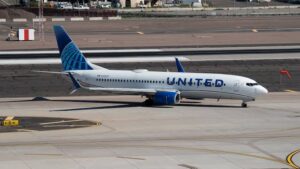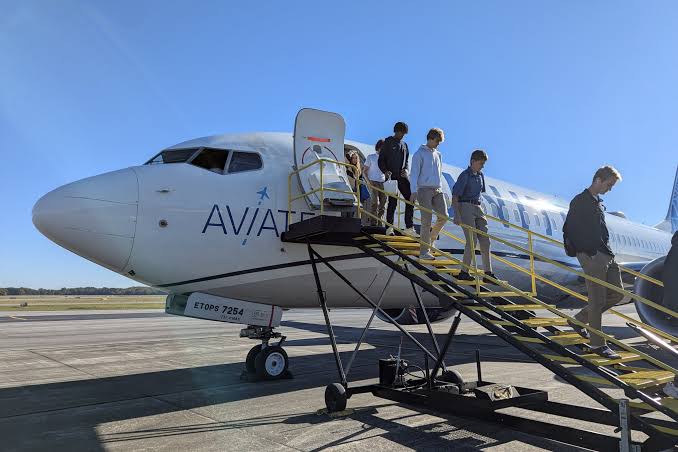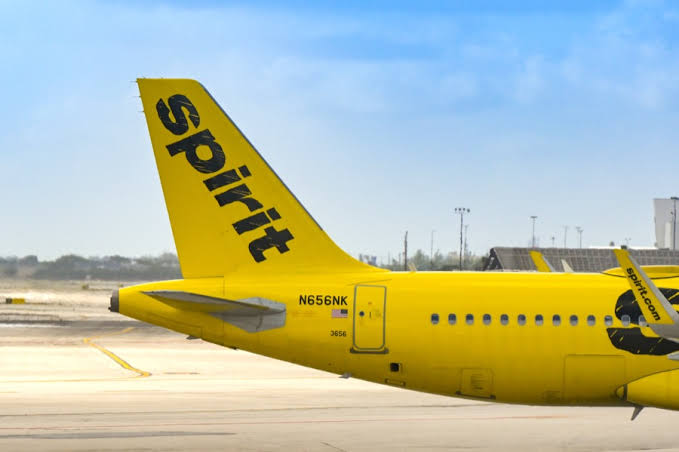United Airlines plane returns to Denver airport after ‘possible wildlife’ strike
On April 13, 2025, United Airlines Flight 2325, a Boeing 737-800 en route from Denver International Airport to Edmonton, Alberta, experienced a significant incident shortly after takeoff. The aircraft’s right engine caught fire, reportedly due to a rabbit being sucked into the engine during departure. This unexpected wildlife strike led to a dramatic sequence of events, culminating in the aircraft’s safe return to Denver.
The Incident Unfolds
Flight 2325 had 153 passengers and six crew members on board. Shortly after takeoff, passengers and crew heard a loud bang accompanied by heavy vibrations. One passenger described seeing a “giant fireball” from the right engine, leading to panic among those on board. Despite the alarming situation, the pilots managed to keep the aircraft airborne for approximately 75 minutes, initially suspecting a malfunction with the landing gear. Eventually, the decision was made to return to Denver, where the plane landed safely without any injuries reported .

Wildlife Strikes: A Persistent Aviation Hazard
Wildlife strikes, particularly involving birds, are a known hazard in aviation. According to the Federal Aviation Administration (FAA), nearly 20,000 such incidents were reported in 2023 alone. While bird strikes are more common, incidents involving mammals like rabbits are rare. In 2024, only four reported wildlife strikes involved rabbits, making the Flight 2325 incident particularly unusual .
Airport Wildlife Management
Airports implement various wildlife management strategies to mitigate the risk of such incidents. These measures include habitat management to make the area less attractive to wildlife, use of deterrents like pyrotechnics or trained birds of prey, and regular monitoring of wildlife activity. Despite these efforts, complete elimination of wildlife strikes remains challenging due to the unpredictable nature of animal behavior.

Aircraft Design and Safety Protocols
Modern aircraft are designed with safety features to withstand certain impacts, including bird strikes. Engines undergo rigorous testing to ensure they can handle the ingestion of birds without catastrophic failure. However, the ingestion of larger animals or multiple birds can still pose significant risks. Pilots are trained to handle such emergencies, following protocols that prioritize the safety of passengers and crew.
FAA Investigation and Oversight
The FAA has launched an investigation into the Flight 2325 incident to determine the exact cause and assess whether any additional safety measures are necessary. This incident, along with others involving United Airlines, has prompted the FAA to increase oversight of the airline to ensure compliance with safety regulations and effective risk management .
Passenger Experience and Airline Response
Passengers aboard Flight 2325 experienced a harrowing ordeal but praised the crew’s professionalism and calm demeanor during the emergency. United Airlines arranged for an alternative aircraft to transport passengers to their destination, minimizing further disruption. The airline has expressed gratitude for the crew’s handling of the situation and is cooperating fully with the FAA’s investigation.
Broader Implications for Aviation Safety
The Flight 2325 incident underscores the ongoing challenges that wildlife poses to aviation safety. While rare, such events highlight the need for continual assessment and enhancement of wildlife management practices at airports. They also emphasize the importance of rigorous training for flight crews to handle unexpected emergencies effectively.
VisaVerge
Conclusion
The safe return of United Airlines Flight 2325 following a rare and dangerous wildlife strike is a testament to the skill of the flight crew and the effectiveness of existing safety protocols. As investigations continue, the aviation industry will undoubtedly examine this incident closely to identify any lessons that can further enhance passenger safety and prevent similar occurrences in the future.






